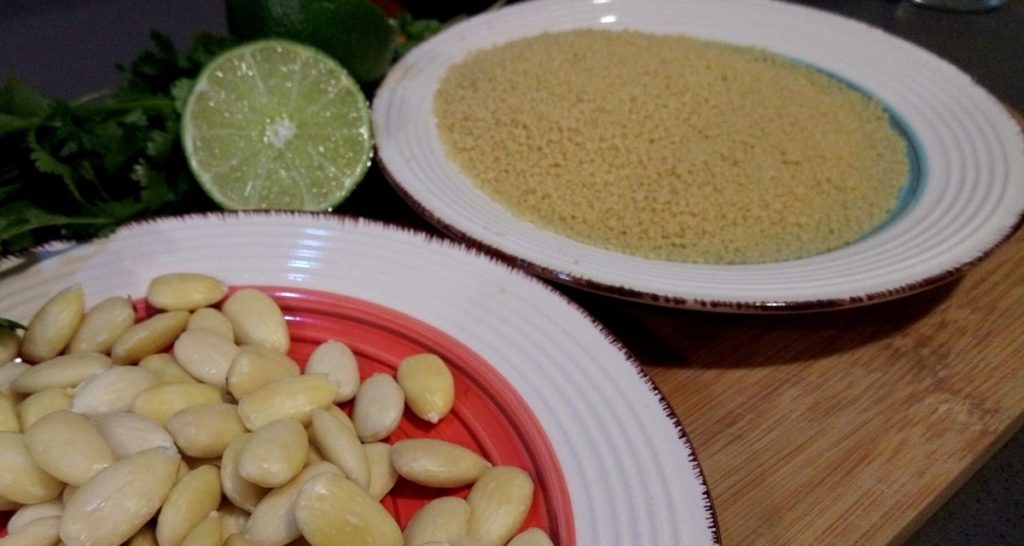Rice and wheat are the most grown and eaten crops in the world, but hey there are a lot of other different grains out there. Don’t get me wrong, rice is great, but it is always good to have variety and there is a lot of choice. It’s good to get plenty of grains into your diet because they are nutritious as well as giving it a lot of different flavors and textures.
One important thing to remember about grains is that they are much better for you if they are whole and not highly processed. Whole grains are much better sources of fiber and other important nutrients (selenium, potassium, magnesium) while refined grains have been milled. It means that the bran and germ are destroyed to give them a finer texture and longer shelf life but the process of refining sadly takes out many of the nutrients including fibre, and we want to eat fibre!
Oh, and a second thing to remember (or to not care about) is that a lot of the things that are commonly referred to and thought of as grains actually aren’t, like quinoa and couscous. We aren’t going to worry about that one though.
As I already mentioned, fibre is king, but I should mention that there are many more important nutrients to be found in grains. They are loaded with B vitamins (thiamin, riboflavin, niacin and folate), the minerals I mentioned before, plus iron. Don’t forget that grains are mostly complex carbohydrates so they are brain foods and give us energy.

Having such a wide choice of grains you can easily find at least a couple you like. For example I don’t like lentils (technically a legume but also often thought of as a grain) even they are great (John really likes them) so we don’t prepare dishes with lentils at home. But both of us like couscous, barley, teff, oats and quinoa. All of them are things that you can prepare in an easy way and in a short time.
If you have a gluten-free diet don’t worry you still have a choice – oats, buckwheat, corn or brown rice just to name a few and if you will look carefully I am sure that there are plenty more.
Almond and lime couscous recipe (vegan)
If you don’t have many ingredients but want to eat something filling and tasty this recipe could be the right one. Also, as usual when I’m cooking, it doesn’t take long to be prepared. Below is the list of ingredients:
- 150 gr. almonds
- 1 glass of couscous
- 1 medium size onion
- 2 cloves of garlic
- A bunch of french coriander
- 1 lime
- Oil (olive would be best)
- Butter (or vegan butter)
- Salt
- Ground paprika or any spice you like
- 1/2 vegetable stock cube

I would recommend to start with peeling the almonds, which is a bit of a pain. First boil some water and put the almonds into it for about 10-20 seconds, then straight away plunge them into cold water, this will make it easy to peel the skin from them. After peeling them, keep the almonds soaking in the water for 10 minutes.
Boil a glass (the same volume as you are using couscous) of water with the stock cube. While you are waiting for it to boil, chop the onion and garlic and fry it in a pan with olive oil and add a little butter.
When the water starts to boil, turn off the heat and add the couscous. Give it a quick stir, cover it with a lid and leave it for 8-10 minutes. In the meantime you can roughly chop the coriander. This is also a good time to toast the almonds in the rest of the butter, adding some salt and whatever spices you like. The smell makes you feel hungry!
Now you have everything ready – onions, couscous, almonds and coriander. The time has come to mix everything together and squeeze in the juice of the lime. Actually I like to really feel the lime quite strongly so I add a lot.
And there is just one more step – serve it! If you have leftovers it is not a big issue, because it is still very tasty cold and can stay in your fridge for a couple of days. Enjoy! 🙂


maybe I use too much water when I make couscous. It’s always kind of heavy and not fluffy.
Maybe…
Depending on who you listen to you need either equal volume of couscous and water, or 1 part couscous to 1.5 parts water, we usually go for 1:1 plus a little bit extra water.
It’s really important to make sure that the lid fits tightly when you cover it.
Also don’t forget that you don’t have to use just water, if you want to add flavour to your couscous you can use vegetable stock or add some spices to the water when you boil it.